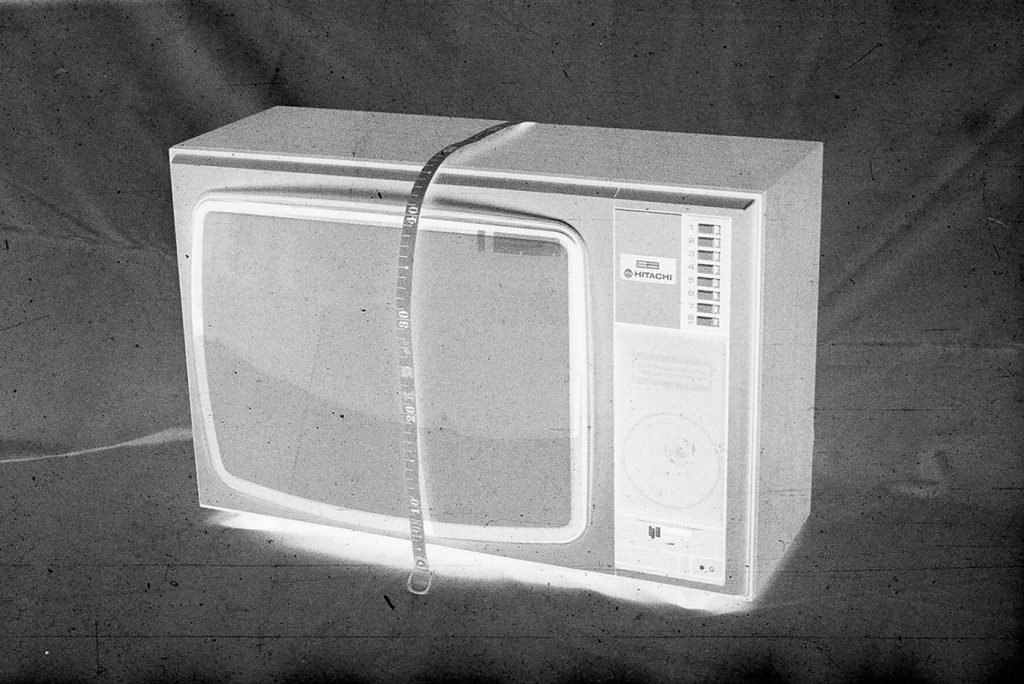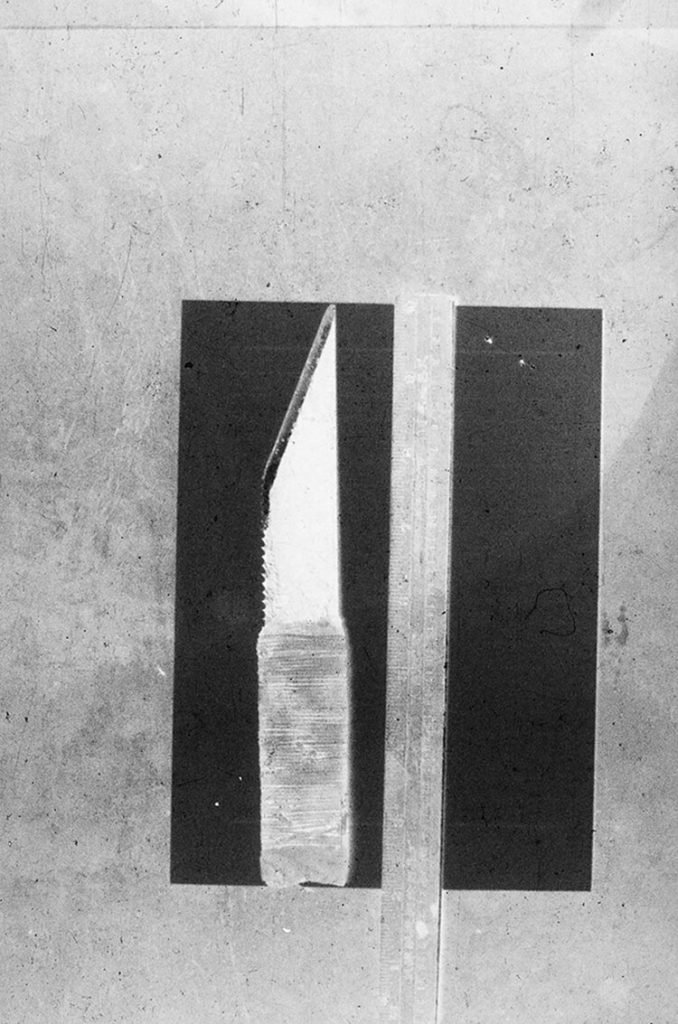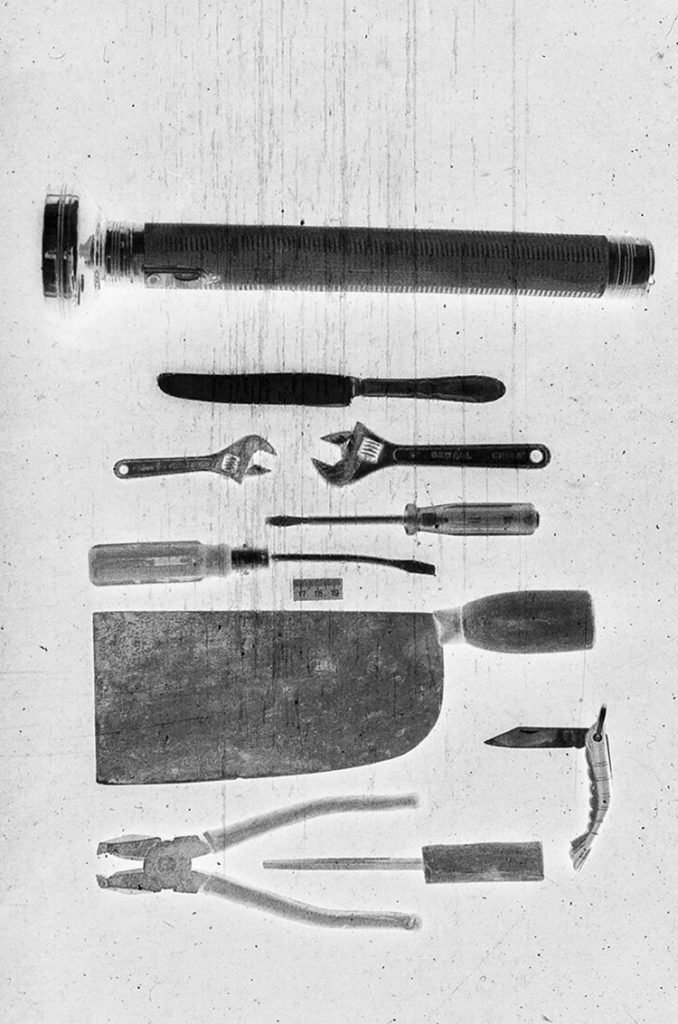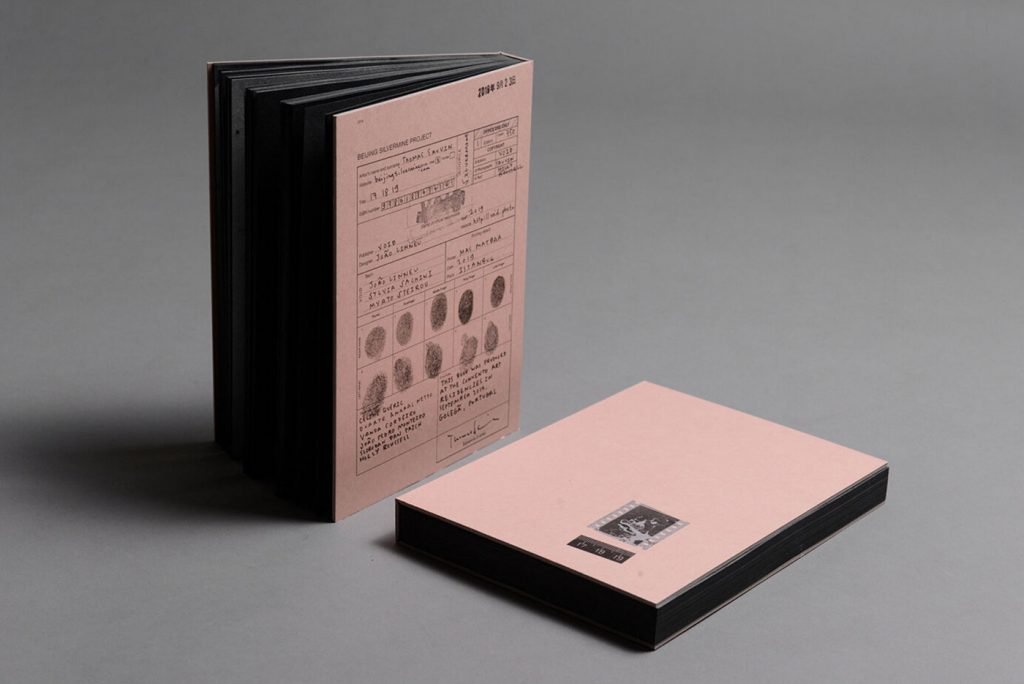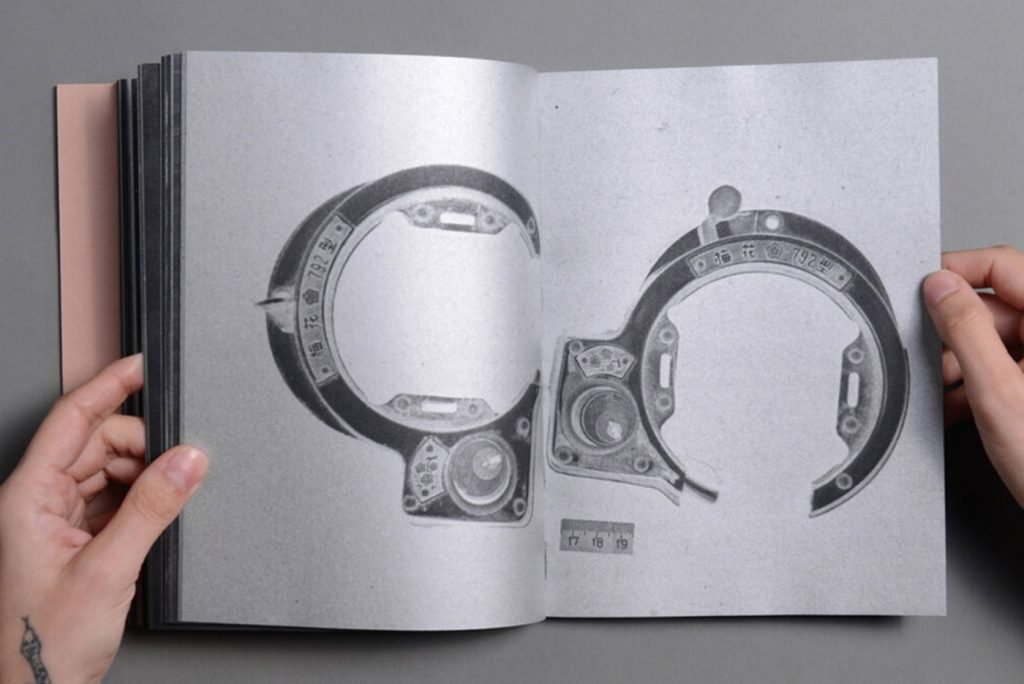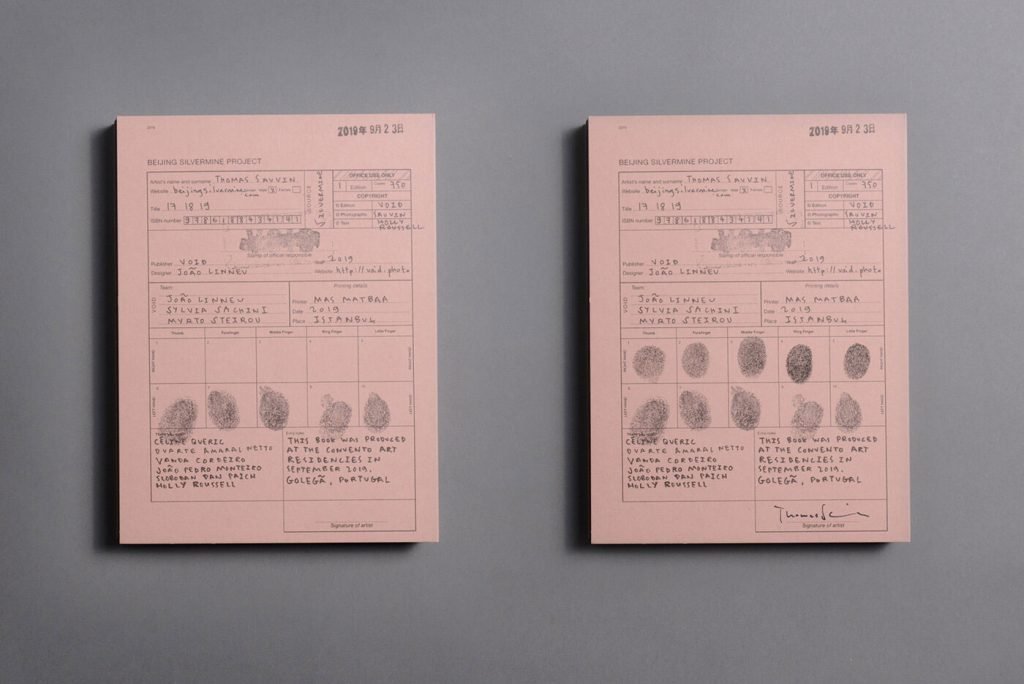With the series 17 18 19 Thomas Sauvin realizes a strongly narrative work for which the taxonomic character and the nomenclature become aesthetic elements capable of giving truthfulness and interest both to the individual images and to the stories they project.
The series was born from a recovery job from a recycling plant on the outskirts of Beijing in 2010 of a bag containing an archive of over 15,000 scratched black and white negatives, shot in one of the city’s detention centers between 1991 and 1993. The photographs present a collection of images of objects or evidence of the crime.
Series images of objects such as: Pocket knives, screwdrivers, keys, shovels, pockets of stolen money, clothing, jewelry and household electronics follow one another and are shown as unequivocal evidence against the accused, a story through the objects things of which we have no other information than the inverted, negative image of things themselves.
Presented in their original form of negatives, the images themselves become objects, hyper-objects and narrative icons that the effect brought about by reading the X-ray camera enhances, suspending illuminated things on the empty and gray background.
Disturbing and beautiful the visual path to which we are invited crosses the remains of what humanity and their events have produced and abandoned, the objects, the images of weapons or objects of desire are presented as artifacts, documents submitted to our gaze as an exam.
Things or evidence are often displayed next to a three centimeter referential ruler in which the numbers 17, 18 and 19 appear, a necessity that of the measurement that refers to the scientific and bureaucratic, non-aesthetic character, for which the same images were conceived.
These images, conceived and characterized by the signs of bureaucratic functionality, are meta objects, living elements of a work of archiving capable of evoking a past and of events in front of which our impression can only capitulate as before the presence of signs capable of say and testify, perhaps better than the word, the wide spectrum of human destinies.
Since 2009, the French collector and artist Thomas Sauvin has salvaged discarded negatives from a recycling plant on the edge of Beijing, negatives that were destined to destruction. His Beijing Silvermine archive, one of the largest archival projects in China, now encompasses over 850000 anonymous photographs spanning the period from 1985 to 2005, thus allowing the reconstruction of a large part of the history of popular analogue photography in the country. This unceasingly evolving archive provides a visual platform for cross-cultural interactions, while impacting on our collective memory of the recent past.
Thomas Sauvin won the prize for the Exhibition of the year at Lianzhou Photo Festival in 2013. His work has been exhibited at the Museum of Contemporary Photography of Chicago, the Beijing Central Academy of Fine Art, and the Guangdong Museum of Art.
Over the last seven years, Thomas has published 10 photo books with the Archive of Modern Conflict (UK), Jiazazhi (CH), Skinnerboox (IT), The M Editions (FR), VOID (GREECE) as well as self-published artist books. His publications has entered the collections of TATE, the V&A, the Bibliotheque Nationale de France and the Pompidou Museum.

